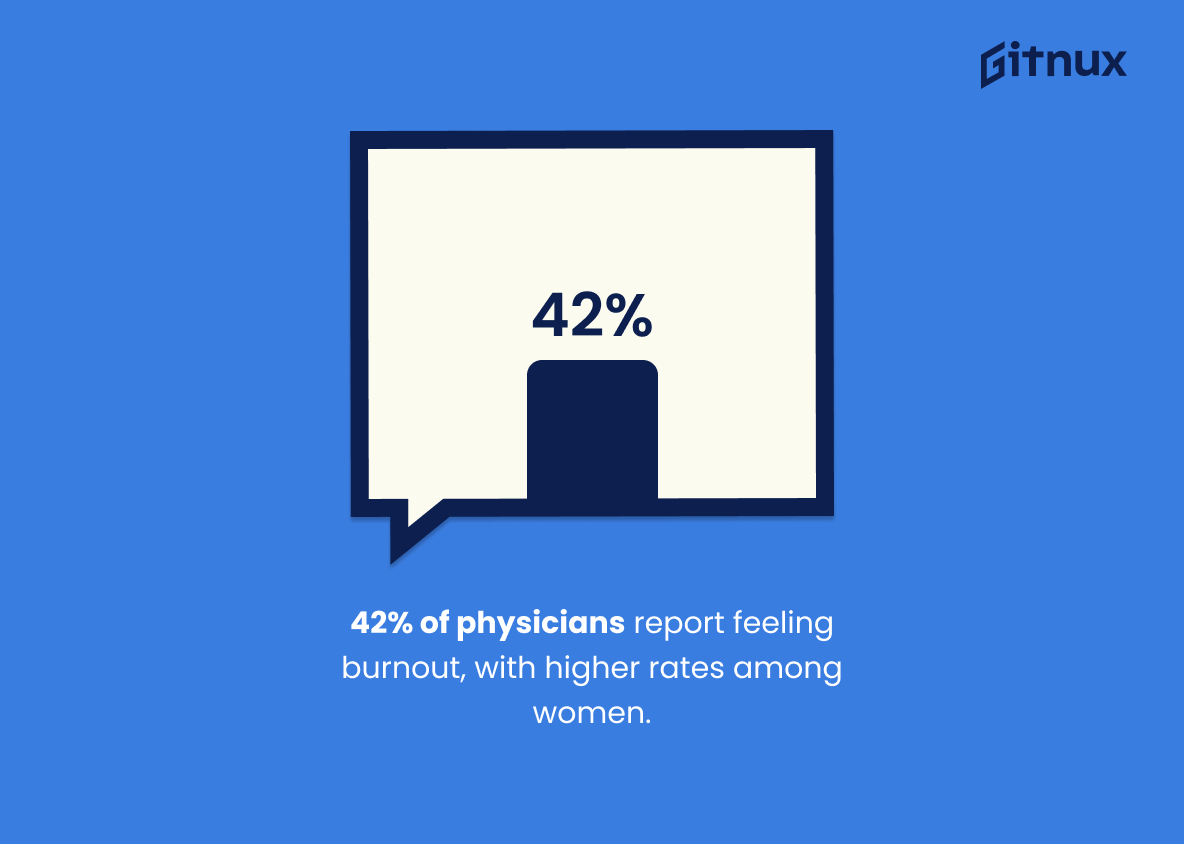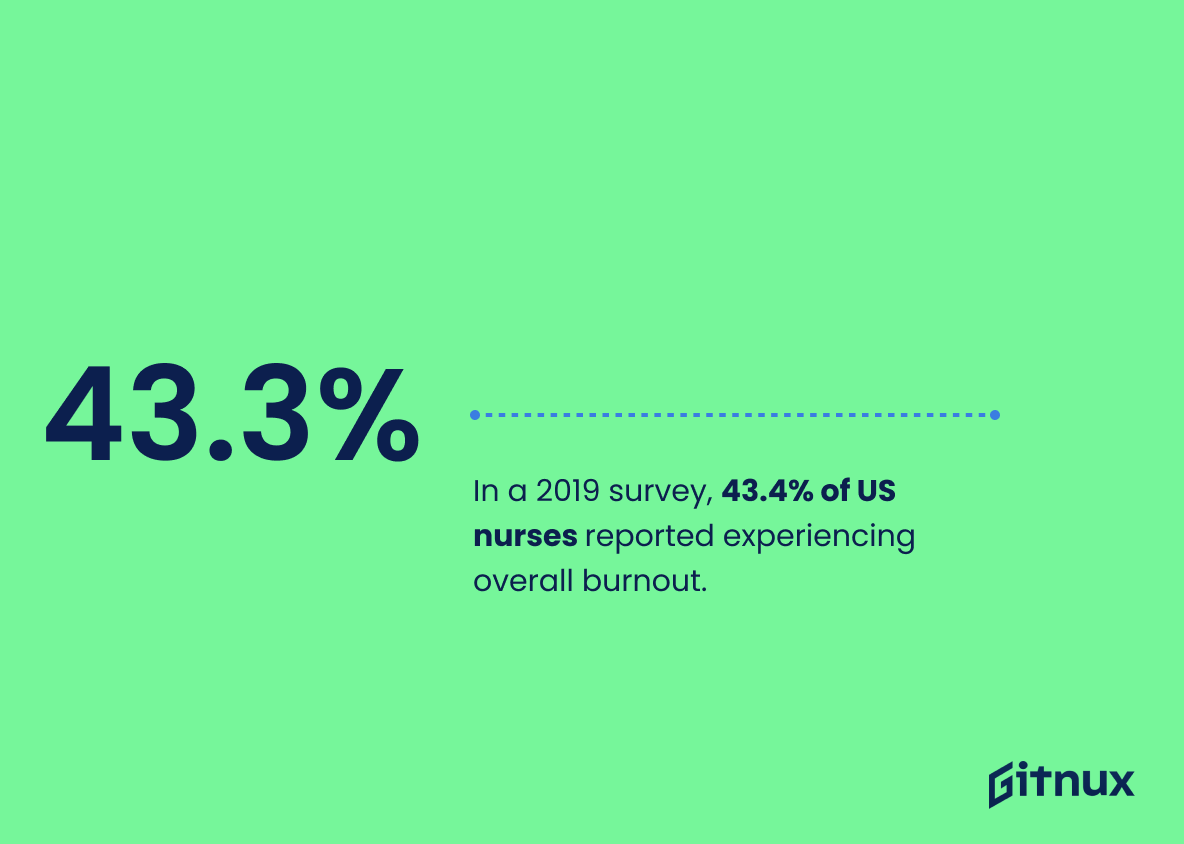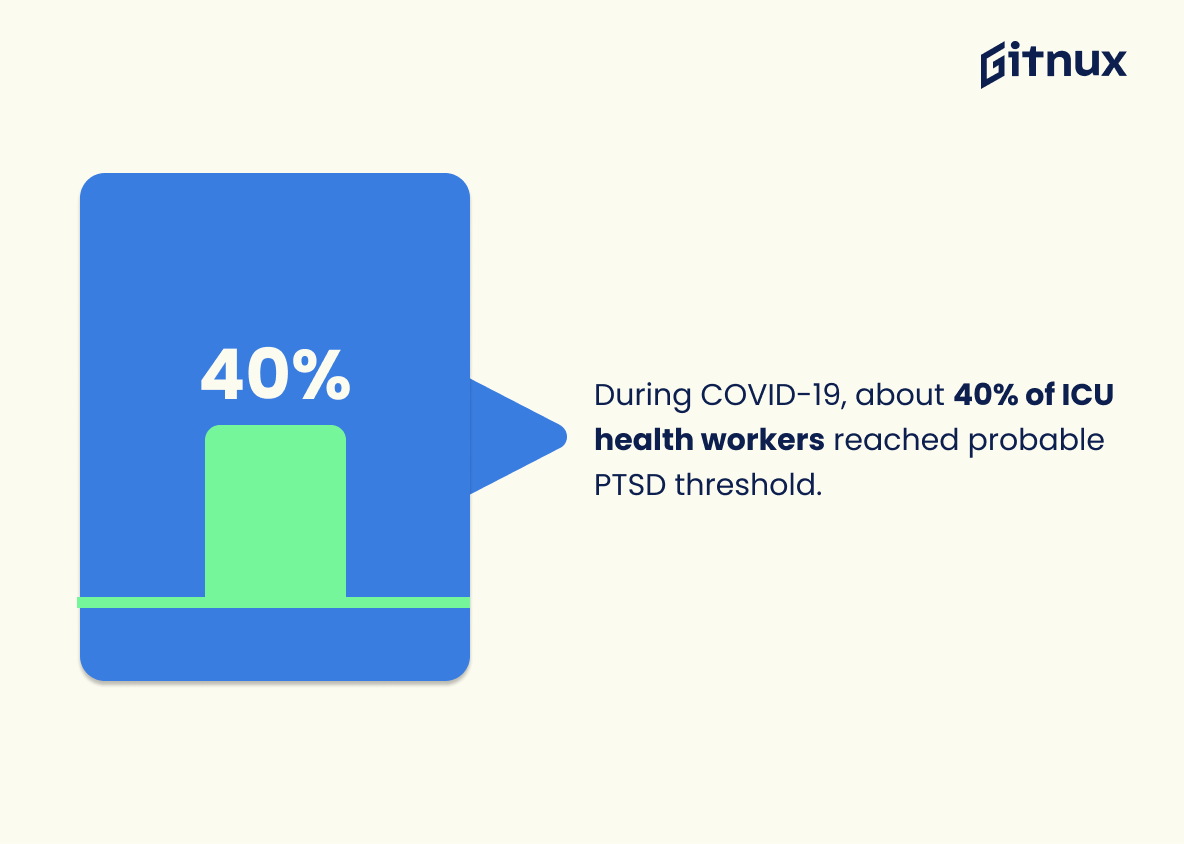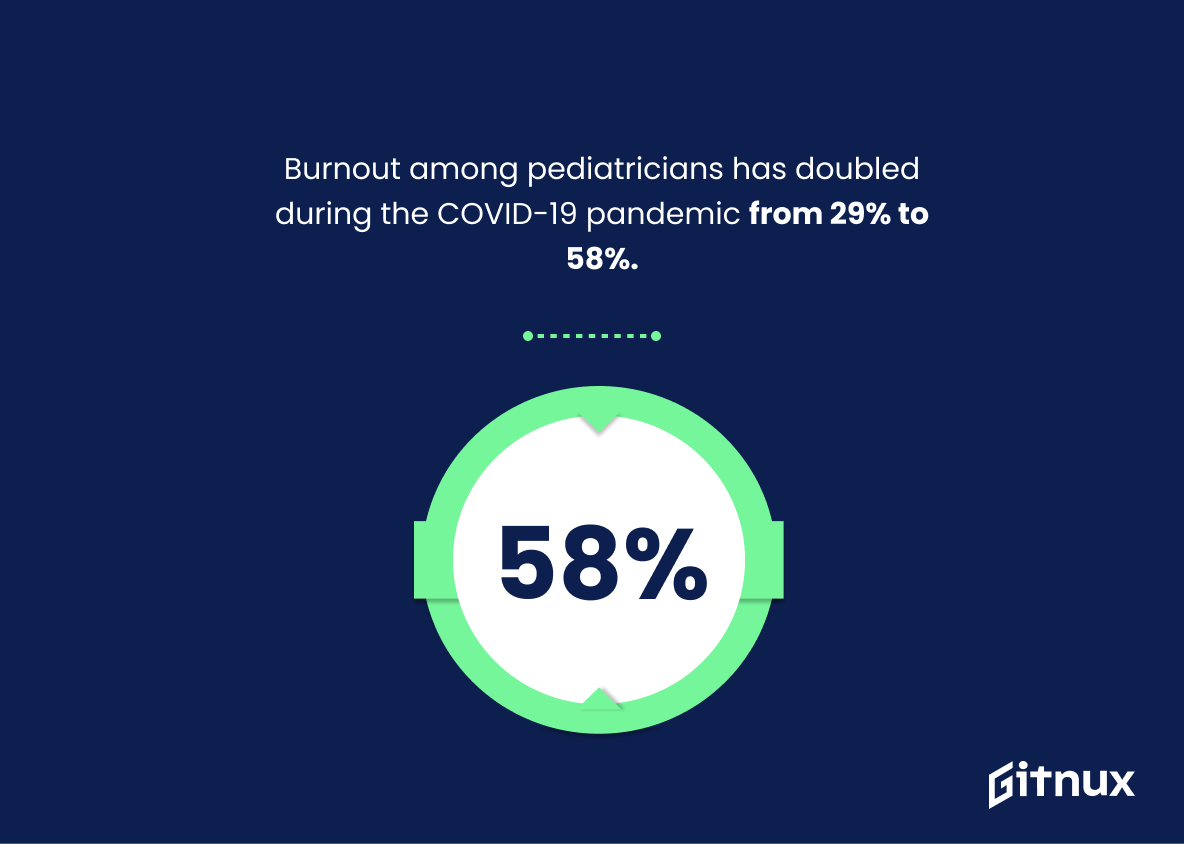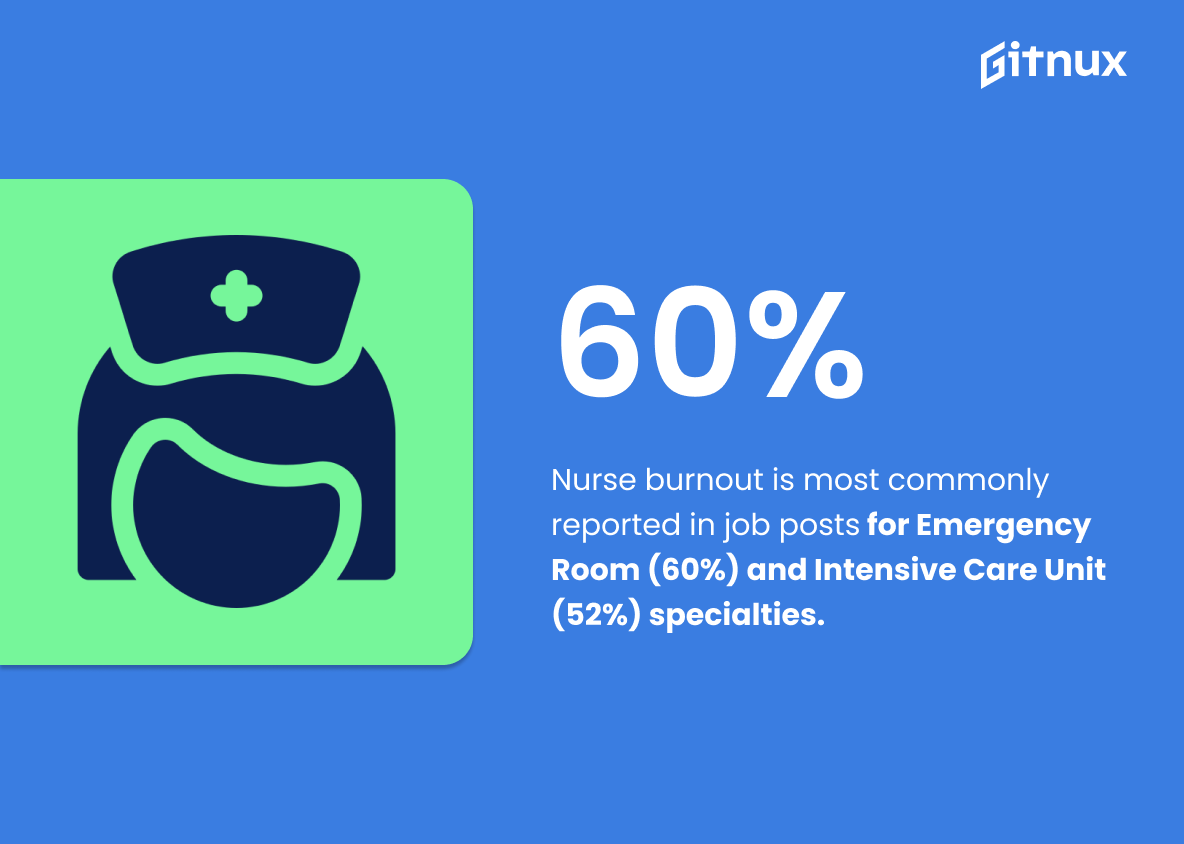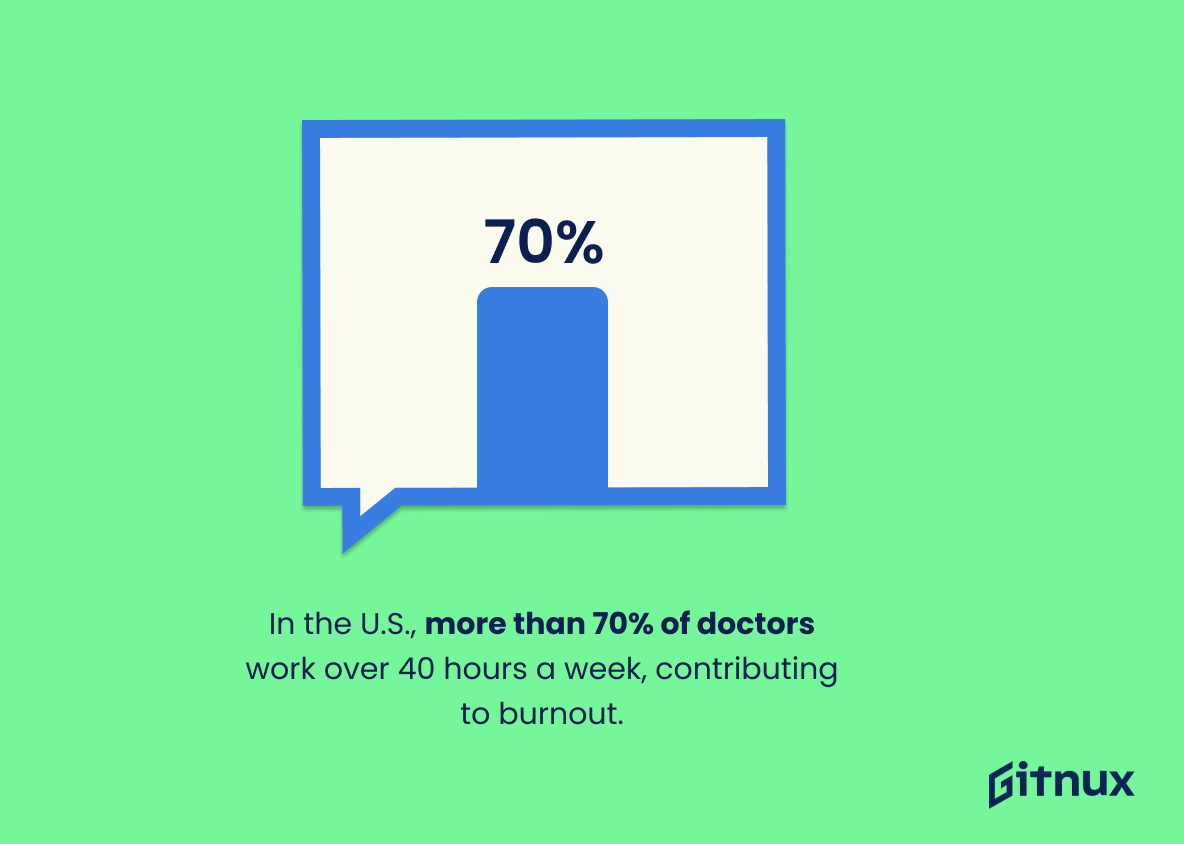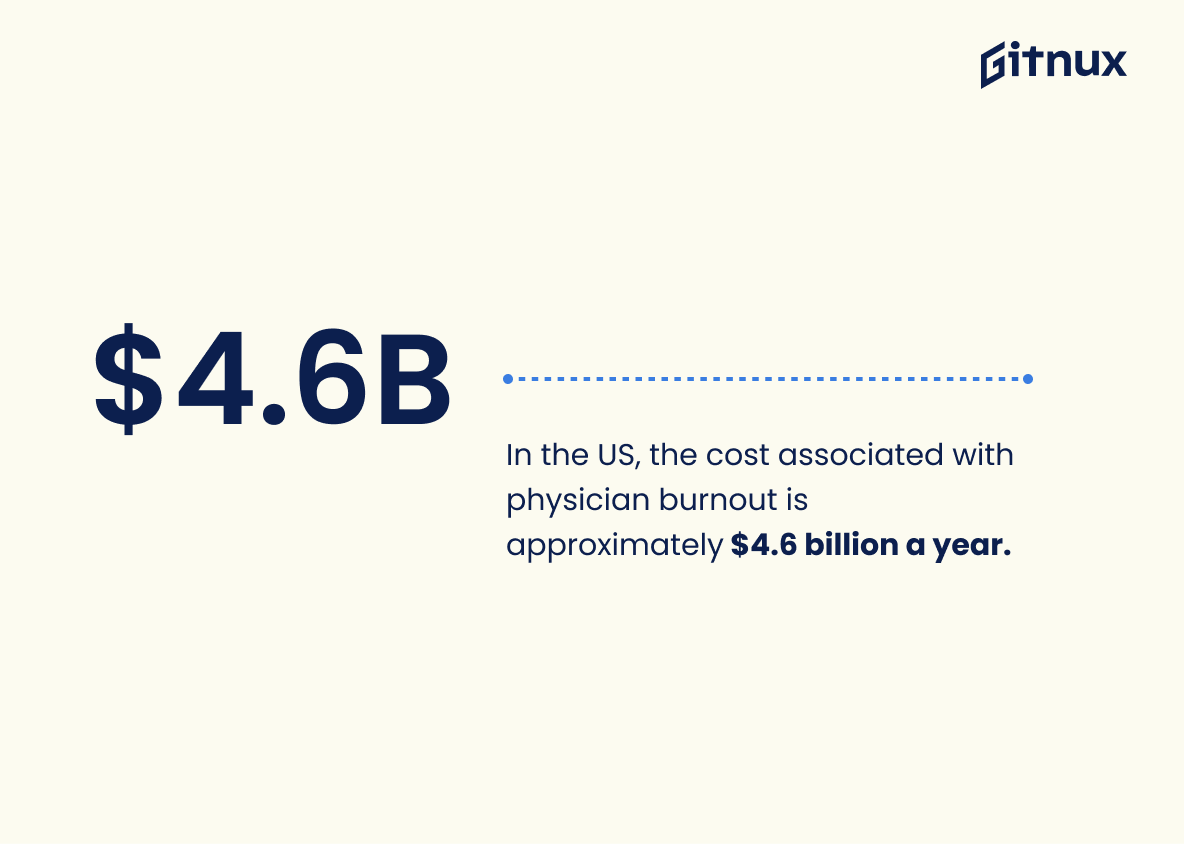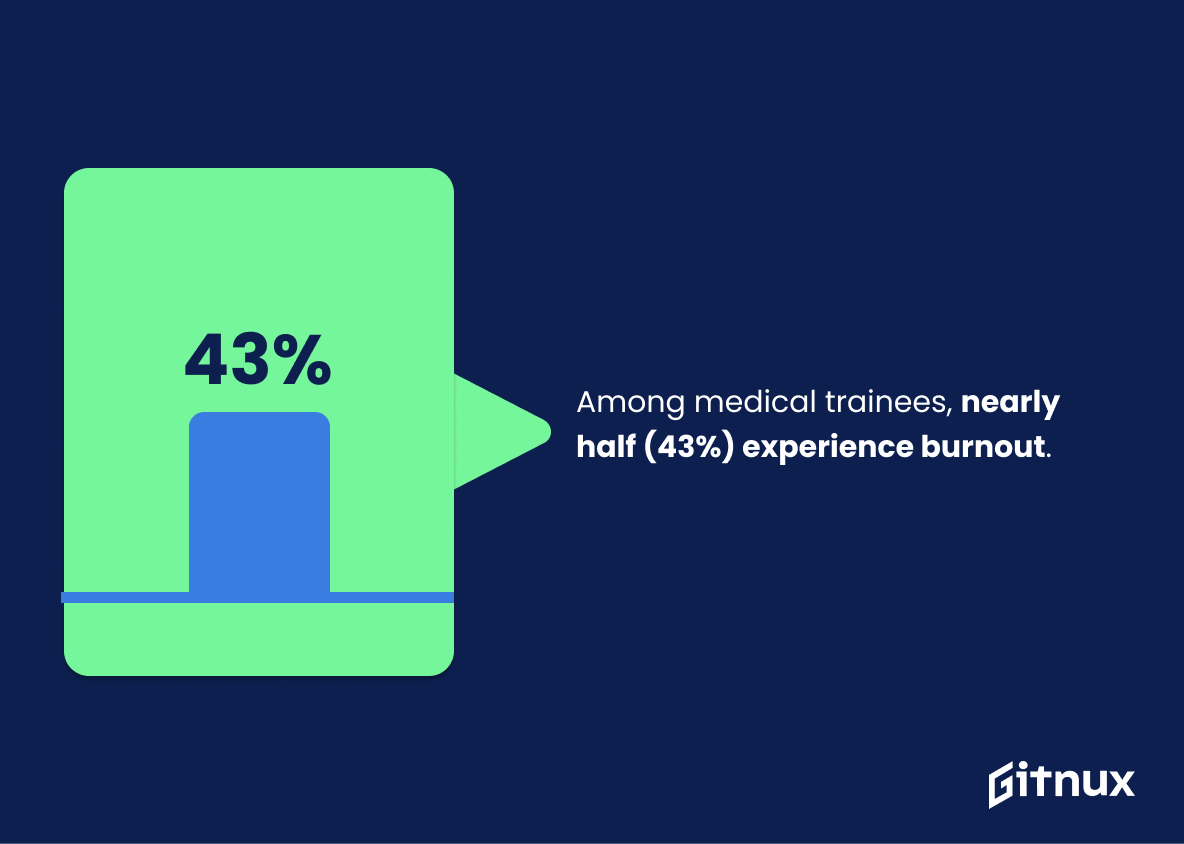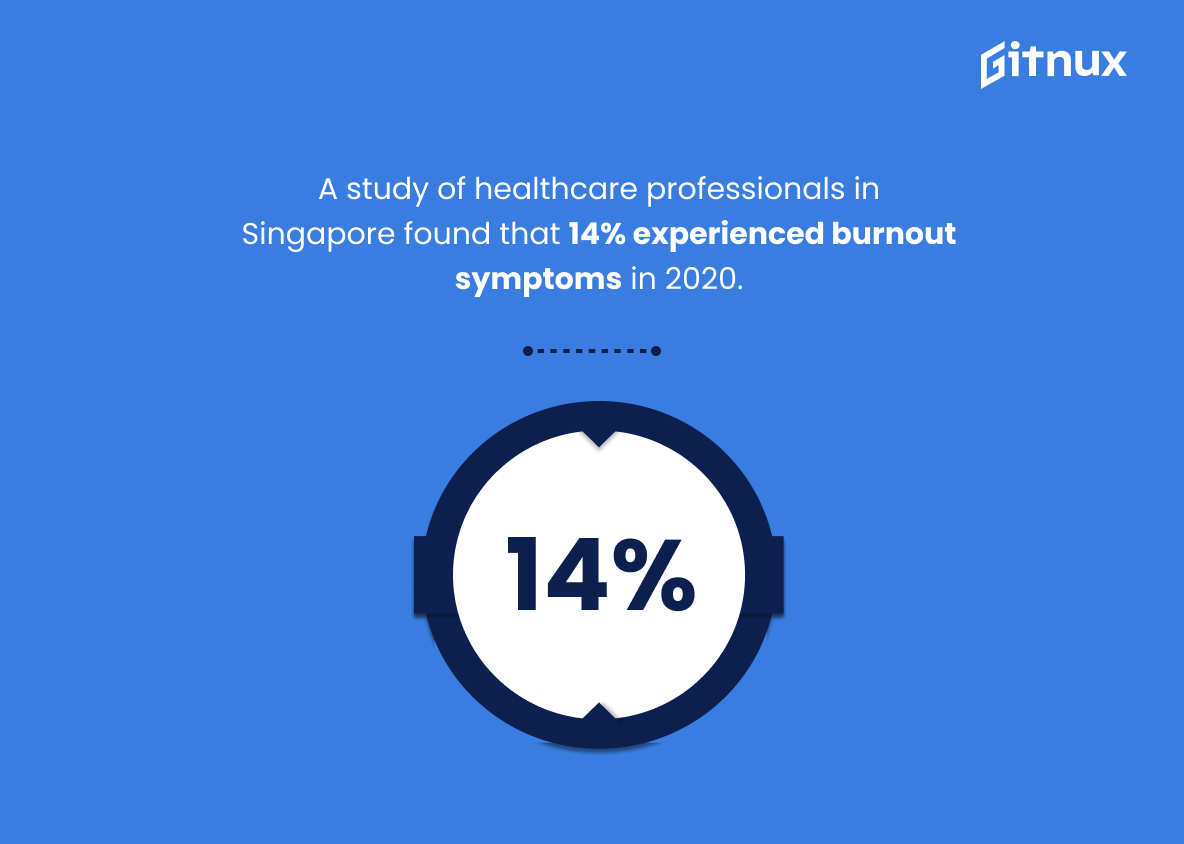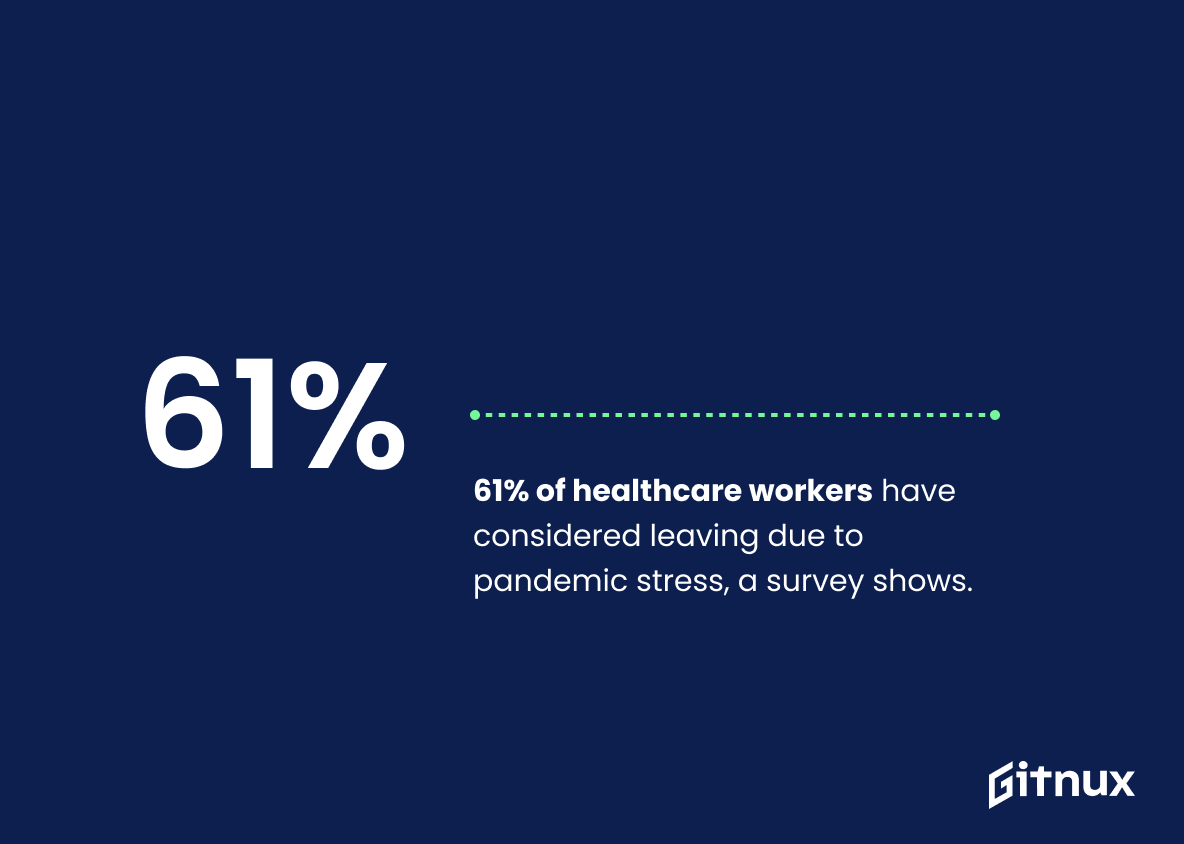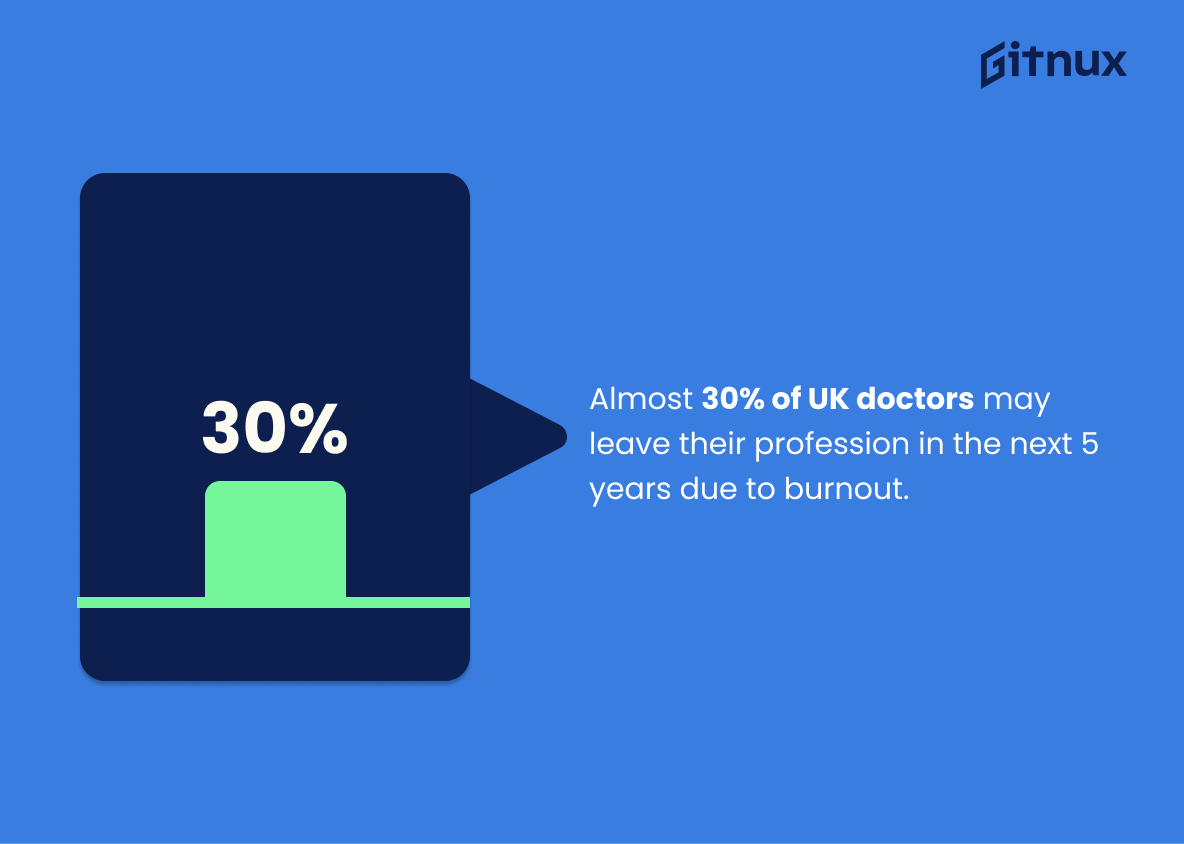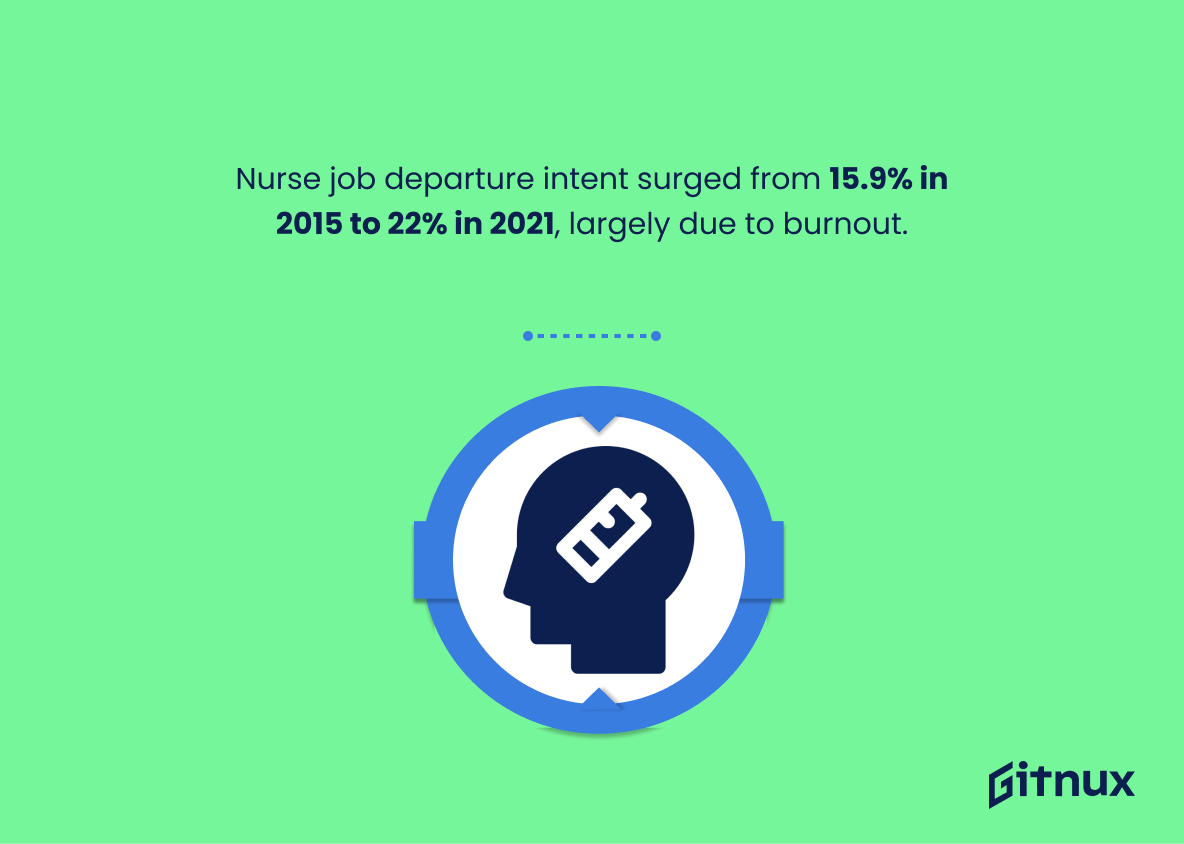Today’s rapidly changing and increasingly demanding healthcare environment places immense strain on our hard-working healthcare professionals. These unparalleled challenges consequentially lead to burnout, a complex syndrome fueled by emotional exhaustion, cynicism, and reduced effectiveness at work.
In this blog post, we delve into the alarming statistics of healthcare worker burnout. By shedding light on this silent pandemic infecting the healthcare industry, we aim to spur dialogues on awareness, prevention, and recovery strategies, ensuring the well-being of our healthcare heroes who tirelessly care for us. Understanding these statistics is not just essential – it could be a lifeline to those who are at the heart of our healthcare system.
The Latest Healthcare Worker Burnout Statistics Unveiled
Burnout rates among health professionals vary by specialty, ranging from 29% to 54%.
Unraveling the layers of these numbers, we journey into the heart of the healthcare landscape – to a world hidden beyond the sterile walls and bustling corridors of hospitals. Here, nestled among stethoscopes and scrubs, lies a stark revelation – burnout rates among health professionals could fluctuate between 29% to 54% depending on the specialty. This intriguing fact has a direct bearing to the theme of our blog post on Healthcare Worker Burnout Statistics, serving as critical evidence to gauge the magnitude of the issue.
This numerical insight acts as a mirror reflecting the stress and emotional drain our healthcare professionals endure, emphasizing the severity and variations of burnout across different specialties. It also highlights an essential need for diversified strategies to combat this issue, as what works for one specialty may not be the answer for another.
An immersive dive into the world of these numbers allows not only an in-depth understanding of the topic, but also sheds light on potential strategies to alleviate this pressing issue. Hence, this statistic is an essential piece in the larger puzzle of healthcare worker burnout, giving depth and gravity to our narrative.
42% of physicians report feeling burnout, with higher rates among women.
Reflecting upon the gravity of the statistic, which presents a disturbing picture that almost half of all physicians are suffering from burnout, holds significant ramifications within a dialogue surrounding Healthcare Worker Burnout Statistics. This is especially true when considering the critical roles these professionals play in providing critical healthcare services.
The higher affliction rates in women further illuminates hidden dimensions of the issue, highlighting the potential gender-linked factors contributing to such escalating problem. Notably, the cascade impact of this can extend beyond the affected individuals, detrimentally influencing the healthcare quality provided to patients and overall healthcare outcomes. This statistic, thus, creates an emphatic call to action to address physician burnout, particularly among women, in an effort to ensure the sustainability of our healthcare system.
In a 2019 survey, 43.4% of US nurses reported experiencing overall burnout.
Imagine the pulse of the healthcare system in the hands of overworked and overwhelmed professionals, symbolized by the 43.4% of US nurses citing overall burnout in 2019. This number represents a sobering testament to the need for change, a glaring symptom of an industry in distress.
This percentage not only quantifies the level of dissatisfaction among nurses but also offers a portal into the patient care crisis this could contribute to. It essentially serves as a beacon, highlighting an area that requires immediate attention to ensure a healthy healthcare workforce, thus resulting in better patient outcomes. This figure is the silent alarm that urgently calls for a constructive discourse on physical and mental health care strategies for healthcare workers.
Around 40% of intensive care unit (ICU) health workers met the threshold for probable post-traumatic stress disorder (PTSD) during the COVID-19 pandemic.
Reflecting on this significant data point —that nearly two in five ICU health workers are likely experiencing PTSD symptoms amid the COVID-19 crisis—reveals a profound narrative of what happens behind the sterile walls of our healthcare sector. This astonishing statistic exemplifies the height of psychological distress among those working at the pandemic’s frontlines. It weaves a pertinent narrative about the escalating issue of healthcare worker burnout, underscoring the need for immediate, substantive action to secure mental health services for our healthcare heroes.
Furthermore, it’s a vehement reminder that beyond their white lab coats and scrubs, these warriors are human, feeling the full weight of humanity’s shared crisis. Including this statistic in a blog post about healthcare worker burnout offers readers a more comprehensive understanding of the struggles these workers face daily.
Burnout among pediatricians has doubled during the COVID-19 pandemic from 29% to 58%.
In the dynamic landscape of healthcare, burnout among physicians is a pressing issue unveiling its severity through stark figures. The disquieting ascend from 29% to 58% in pediatrician burnout during the COVID-19 pandemic underscores a critical point of discussion in any discourse on Healthcare Worker Burnout Statistics.
It dramatically signifies the weight of the global health crisis on our medical superheroes, especially those dealing with children’s health, further echoing the industry’s need for comprehensive approaches to tackle worker exhaustion and stress. This strident upsurge is not merely a statistic within a blog post; it’s an alarming call to prioritize healthcare professionals’ wellbeing, whose burnout might have potential ramifications on patient care and the overall healthcare system.
Nurse burnout is most commonly reported in job posts for Emergency Room (60%) and Intensive Care Unit (52%) specialties.
Painting a vivid picture of healthcare worker burnout, this provocative statistic reveals the significant distress experienced by nurses in two particularly demanding specialty areas: the Emergency Room and the Intensive Care Unit. The high percentage of job posts for these specialties underlines the dauntingly high workload and emotional challenges faced by nurses.
It thus drives home the reality of burnout in the healthcare sector, making it a stark and invaluable lens through which to understand this pressing issue. In the broader narrative of healthcare worker burnout statistics, this statistic is the voice of nurses from the ER and ICU, calling for urgent attention and change.
In the U.S., more than 70% of doctors work over 40 hours a week, contributing to burnout.
This compelling statistic proves to be the fulcrum in our understanding of healthcare worker burnout. In the U.S., where over 70% of doctors work in excess of 40 hours a week, health professionals grapple not just with demanding shifts, but with chronic extenuation that significantly affects their mental health and ability to perform.
This data doesn’t just speak volumes about the grueling experiences of medical practitioners, it also builds a powerful case for immediate policy reforms and interventions that assist in maintaining a healthy balance between work and rest for our healthcare heroes.
In the US, the cost associated with physician burnout is approximately $4.6 billion a year.
Highlighting the staggering $4.6 billion yearly burnout cost for physicians in the US underscores the severity of this healthcare crisis, acting as a wake-up call for anyone reading the blog post. This astounding figure isn’t just a number, it’s a symbol of countless lost productivity hours, a strain on the healthcare system, valuable resources diverted, and professionals at the brink.
Including this in a blog post about Healthcare Worker Burnout Statistics adds weight and urgency to the issue, encouraging readers to engage further and understand the need for immediate resolution strategies.
Among medical trainees, nearly half (43%) experience burnout.
Diving headfirst into the world of burnout statistics within the healthcare industry, one figure grabs us by the collar and shakes us awake; the startling revelation that approximately 43% of medical trainees find themselves grappling with burnout. This startling number isn’t just a statistic – it’s a pulsating, glaring, red siren of concern in the labyrinth of healthcare worker burnout.
It throws into stark relief the immense stress experienced by these budding professionals under a system structured to curate excellence but potentially engendering exhaustion. The glaring spotlight is now turned, not just on established healthcare professionals, but those coming up the ranks. Thus, addressing burnout must not merely be a solution for present healthcare providers, but a proactive measure embedded in the training of future lifesavers.
A study of healthcare professionals in Singapore found that 14% experienced burnout symptoms in 2020.
Shedding light on the stark reality of healthcare professionals’ stress levels, these profound numbers from Singapore offer a glimpse into the looming crisis of burnout. This percentage, albeit seemingly low, signifies a pressing issue within the realm of health care, highlighting the importance of prioritizing worker well-being in the context of providing efficient and effective medical care.
As presented in a blog post about Healthcare Worker Burnout Statistics, these numbers serve as a testament to the mental toll the profession can take and underline the urgent need for implementing supportive strategies and preventative measures. The Singapore example grants a universal applicability, as it adds gravity to the reality that employee burnout permeates even countries renowned for their healthcare systems.
48% of healthcare providers report significant stress and burnout as a result of the COVID-19 pandemic.
Delving into the gritty reality of the pandemic’s impact, the startling revelation that 48% of healthcare providers experience significant stress and burnout exposes the colossal emotional toll lurking beneath the frontlines. As an autopsy of the healthcare worker experience, this statistic injects a dose of stark reality into our discourse, an essential strand in the intricate tapestry illustrating burnout amongst those in healthcare.
The sheer prevalence of this issue underscores the urgent and critical need to identify and provide pertinent solutions for the healthcare workforce, resonating seamlessly with the central theme of a blog post on Healthcare Worker Burnout Statistics. It offers tangible, palpable proof of a sector in crisis, helping to punctuate the narrative with a sense of somber urgency. With this statistic, we are given a voyeuristic insight into the behind-the-scenes agony and exhaustion of our indispensable healthcare warriors.
In a 2021 survey of Canadian physicians, nearly one in three (30%) reported high levels of burnout.
Painting a compelling picture of the escalating burnout crisis among Canadian healthcare professionals, this chilling 2021 statistic uncovers a troubling reality – nearly one in three physicians reported experiencing high levels of burnout. As we delve into the stark reality of healthcare worker burnout statistics via this blog post, the gravity of this finding in the world’s second-largest country cannot be overlooked or understated.
What stands as a somber testament to the immense pressure and unforgiving demands of the healthcare industry, this figure at 30% augments the importance of immediate intervention for mental health support and institutional reform. Closely mirroring global trends, this rattling revelation should serve as a wakeup call, an urgent reminder for health administrators, policymakers, and society at large to prioritize and address this pressing issue that risks not just the wellbeing of our physicians, but the very efficacy and compassion of healthcare delivery itself.
According to a survey, 61% of healthcare workers say pandemic stress has caused them to consider leaving the healthcare field.
In the realm of Healthcare Worker Burnout Statistics, the riveting piece of information about 61% of healthcare workers contemplating leaving their profession due to pandemic-induced stress serves as an alarming illustration. It underscores the severity of the burnout phenomenon within the healthcare sector. This intriguing statistic makes us aware that the repercussions of the pandemic on mental health are not sparing even the scaffolds of our health systems.
It paints a stark picture of widespread professional dissatisfaction and potential staffing crisis, markedly challenging the strength and resilience of our healthcare systems. So, amidst discussions about healthcare worker burnout, this statistic operates like a sharp note resonating through what might otherwise be a noise-filled field, demanding attention and action to address this escalating concern.
Almost 30% of UK doctors may leave their profession in the next 5 years due to burnout.
Highlighting the numerical reality, the statement ‘Almost 30% of UK doctors may leave their profession in the next 5 years due to burnout’ paints a potentially alarming portrait of the healthcare sector. Taking a deeper dive into these figures thrusts us into the quagmire of healthcare worker burnout statistics. The prospect of losing nearly one-third of our medical workforce in such a short span is a shocking realization, amplifying the gravity of the burnout issue.
This stark statistic invigorates the discussion on the impending ‘healthcare exodus’, solidifying it as not just a distant probability, but an impending reality. As we explore the labyrinth of healthcare worker burnout, this distressing data serves as a stark milestone, illuminating the urgent need to address the mounting pressures – physiological, psychological, and social – that our healthcare professionals are enduring.
Moreover, this enumeration underscores the potential domino effect on patient care and the UK’s health care system as a whole; a decline in practicing doctors could equate to longer patient wait times, increased workload for remaining staff, and potential decline in healthcare quality. Therefore, understanding the magnitude of this statistic is essential when charting preventative measures and interventions aimed at reducing the burnout rate and, in effect, ensuring the stability of healthcare services.
The percentage of nurses who intend to leave their jobs within the next year increased from 15.9% in 2015 to 22% in 2021, much of it related to burnout.
The inclusion of the statistic – “The percentage of nurses who intend to leave their jobs within the next year increased from 15.9% in 2015 to 22% in 2021, much of it related to burnout” – adds a potent layer of detail illuminating the severity of healthcare worker burnout.
Not only does it quantify the escalation of the issue over six years, but it also underscores a dire potential for future healthcare crises. This steady increase in healthcare professionals planning to leave their work undeniably signifies an industry under severe strain. Gradually losing a significant percentage of healthcare workers like nurses is not an impending threat; it’s a silent crisis already unfurling its claws.
This statistic is the canary in the coal mine, indicating a critical breadth and depth of burnout among healthcare workers. As such, it compels immediate attention and action to develop supportive strategies that can mitigate this burnout, retain crucial healthcare professionals, and thereby safeguard our healthcare system as a whole from unprecedented future shortfalls.
In a study, burnt-out healthcare professionals are 2 to 3 times more likely to make a medical error.
Diving into the significance of this revealing statistic paints an alarming picture in our exploration of healthcare worker burnout statistics, displaying the stark reality that burnt-out healthcare professionals have a two to three-fold increased likelihood of committing a medical error.
This is particularly emblematic of how intensively healthcare professions can deplete one’s mental resources, leading potentially to detrimental outcomes that extend beyond the individual’s well-being to cripple actual patient care. In a profession where precision and well-informed judgments could dictate life and death, any sort of inclination towards error, propagated by burnout, profoundly underscores the need for preventive measures and professional support.
Conclusion
In a nutshell, the statistics surrounding healthcare worker burnout paint a bleak picture. The majority of our medical professionals are wrestling with overwhelming stress, long work hours, emotional fatigue, and a lack of personal time. This burnout doesn’t just affect nurses and doctors but trickles down to the patients they care for as well.
It’s a pressing issue that calls for immediate attention, advocating a massive reformation in our healthcare systems. Strategies must be put in place to ensure balance and wellness for those who dedicate their lives to saving ours. Through acknowledging the problem and taking proactive steps, we can hope to diminish burnout rates and construct healthier work environments for our healthcare heroes.
References
0. – https://www.www.ama-assn.org
1. – https://www.www.2nd.md
2. – https://www.journals.lww.com
3. – https://www.jamanetwork.com
4. – https://www.www.cma.ca
5. – https://www.nurse.org
6. – https://www.www.bmj.com
7. – https://www.www.incrediblehealth.com
8. – https://www.www.aamc.org
9. – https://www.www.nursingworld.org
10. – https://www.www.aappublications.org
11. – https://www.www.ncbi.nlm.nih.gov
12. – https://www.www.medscape.com
13. – https://www.www.advisory.com

